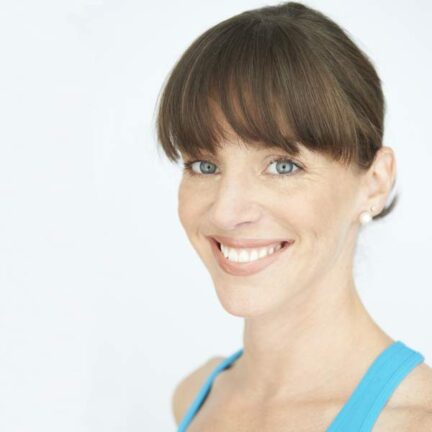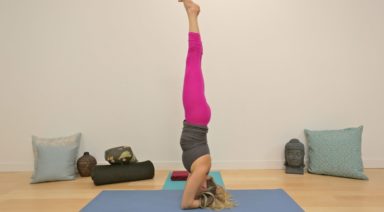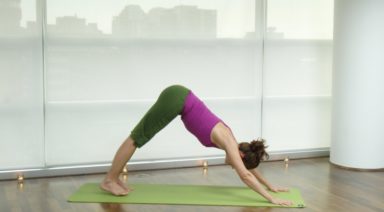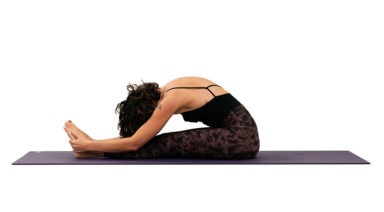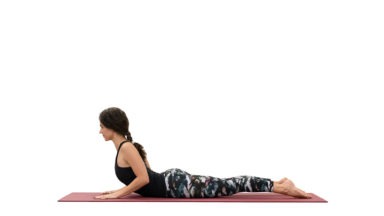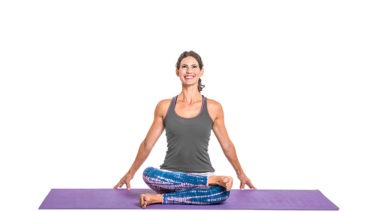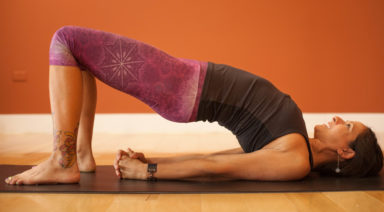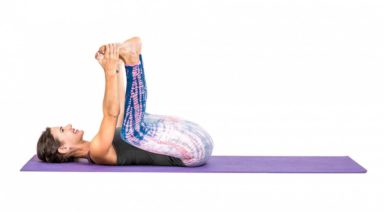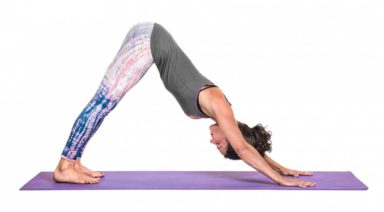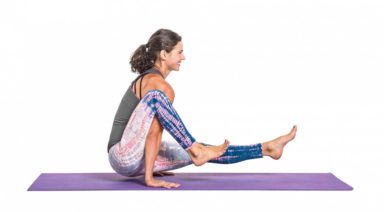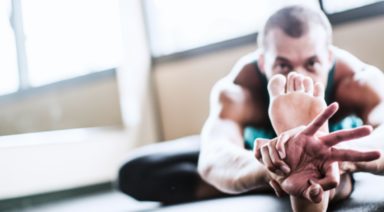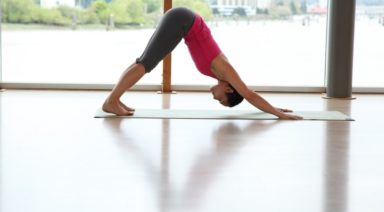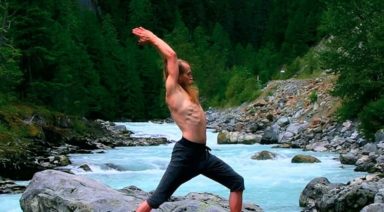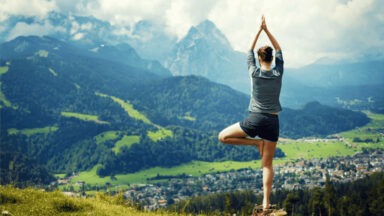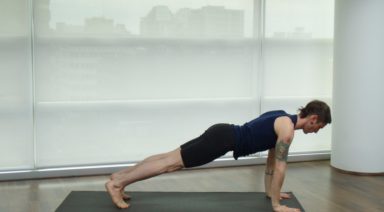Poor Posture and Pressure on your Spine

Freddie Mercury was right: we’re under pressure. Nothing can be truer when it comes to your spine. It’s because of simple physics: the pressure or load on your back increases as you move away from a neutral posture. Here are the numbers: Standing straight puts 100mm of pressure on the intervertebral discs of your spine; add a forward bend while flexing or rounding your back and you’ve more than double the pressure, or 220mm. Can you see now why reaching your toes in Uttanasana or any standing forward bend before you’re ready isn’t worth the potential harm to your back?
What poor posture means to the ongoing health of your back?
Over time, poor posture causes the discs between the vertebrae to wear down and lose their ability to cushion and act as shock absorbers. The discs are pushed out towards the back from their normal position which causes bulging or herniated discs. These bulging and worn out discs can cause a more serious problem by increasing the pressure on the spinal nerves and the spinal cord itself. The result is pain in the legs, including sciatica, arms, shoulders, and neck, and problems with muscle innervations, movement patterns and the sensation of temperature, pressure and pain.
These same problems can be worsened when sitting, believe it or not. Sitting, in contrast to standing, actually increases the intradiscal load compared to standing; spinal pressure “sits’ around 140mm pressure. If you slouch (I’m talking to you desk slouchers!), spinal pressure increases to 190mm; add some weight and you’ve put a whopping 275 pounds of pressure on your spine. This is why in certain methods of yoga like Iyengar students learn standing poses before sitting ones as a general rule as they’re considered more advanced.
Sitting for long periods of time can definitely cause back pain or worsen an existing back problem. Sitting is a static posture that increases stress on the entire back, shoulders, arms, and legs, and especially the muscles of the spine. Slouching overstretches spinal ligaments and surrounding structures of the spine and nerves, blood supply is interrupted and the back muscles are overstretched.
The Solution
If you’re not a yogi yet but find yourself slouching or sitting for long periods of time during the day, your yoga can be as simple as doing the following:
-
Getting up periodically to stand up and take the pressure off your spine
-
Sit back into your chair so your back is supported. In yoga postures, ground evenly into your support and allow your spine to straighten up
-
Use a lumbar roll between your lumbar or lower back and your chair. To judge the proper size of the roll, sit back in your chair, place your forearm behind your lower back between it and your chair and lean back. Your forearm is approximately the size of a lumbar roll. This works when driving too.
-
Move! Joints don’t have much blood flow. Joints get nutrition in and waste out by physical movement. Move freely in your chair instead of sitting still for hours at a time.
For you yogis, body awareness is key to minimizing the pressure on your back. I’m not saying never practice a forward bend or a seated pose but rather know how to practice them safely. Even a seemingly friendly pose like Savasana can do harm. Sure, while lying down you’re at the lowest end of the spinal load spectrum at 25mm. As a teacher, I ask my students to roll to the side before sitting up not simply to avoid feeling dizzy and lightheaded but also to reduce the pressures on the spine. For the record, resting on your side applies 75mm pressure on your back, which is quite a bit less than pulling yourself straight up from lying flat on your back.
So, the take home message is: do the work in other poses which don’t load the spine first to lengthen your leg muscles and hamstrings, and strengthen your back before you throw yourself into a forward bend. Realize which types of poses are right for you. Gentle flexion of the spine isn’t for everybody and that’s ok. Once your body is ready, you’ll be reaping the benefits of practicing Uttanasana instead of causing harm to our back.
3 Exercises to Strengthen Your Hips and Balance Your Body

In yoga we often speak of tight hips, needing to open the hips, balancing the opening of our hips from side to side (etc), but there is more to a balanced body than open hips. We also need stability and support from our hips. This is important not only in yoga but also in day-to-day activities like simply walking. It is especially important if you are an athlete and need to perform on one leg.
A Look Inside the Hip Our hip musculature is made up of many muscles, large and small. For stability, we need the muscles of the side of the hip to be active and engaged. If you place your hands on the sides of your bony pelvis below your waist, you can imagine a tear-drop-shaped area below the ridge of your pelvis. The front part of the tear is the Tensor Fasciae Latae or TFL which connects with your IT band to join at the knee. At the back part of the teardrop are the Gluteus Medius and Minimus, which lie underneath your big Gluteus Maximus.
These muscles are what support and keep you steady in balance poses or when you transfer weight from one leg to the next as you walk or run. For many of us, these muscles are fast asleep, so we recruit our hip flexors at the front or our glutes and our hamstrings at the back to do a job they were not designed to do. Over time this can lead to low back pain and sacroiliac joint pain. Forcing our body to compensate will lead to problems over time. A look outside the hip Tree pose can be a simple test to see if we are accessing our side/lateral hip stabilizers.
Stand in front of the mirror and take a medium-size tree pose with your foot resting on the shin (even if you can go higher). Place your hands on your bony pelvis again and see if they are level from side to side. If not, press the shin into the foot and the foot back into the leg so that the standing hip drops to make the hips level. If this is too difficult to achieve, keep your foot off the ground but come out of tree pose so that your knee is facing forward, raised to hip level with the knee bent.
Try to level the hips again here by firmly rooting into the ground with the standing leg. My Three Favorite Lateral Hip Exercises Most of us can benefit from a little extra love and attention to the side of our hips. Try these exercises to wake up your hips and begin to stand taller on one leg
1. Kick the Ball Standing: Lift one foot off the ground. Keep your leg straight and send your heel forward, toes pointing out as if you were passing a soccer ball in slow motion. Reverse this motion by turning your toes in and sending your leg behind you. Flow forward and back, heel in and out, in a short arc. Don’t forget about your standing leg: root into the earth and don’t let the hip hitch out to the side. Repeat this motion ten times and then switch sides.
2. Clam Shell: Lie on your side with either your arm or a foam block supporting your head. Bend both hips to 90 degrees with knees bent, feet touching, stacked on top of each other. Slowly lift your top knee up towards the sky while keeping your feet together (as if you were a clamshell opening). Keep your hips stacked and avoid rotating with the pelvis. Lower, repeat times, and switch sides.
3. Bicycle: Lie on your side with both legs straight. Flex your feet, as if standing, and stack them on top of each other. Lift your top leg so that feet are hip-width apart. Keep this distance as you flow through this sequence: a) knee bent move forward to the hip at 90 degrees, b) straighten at the knee, c) float straight leg back to start. This should look like you are slowly pedaling a bike. Keep the hips stacked and stable. Strengthening our lateral hips will not only improve our yoga practice, but will also balance our body and prevent injury so that we continue to walk, vinyasa, and run for years to come.

